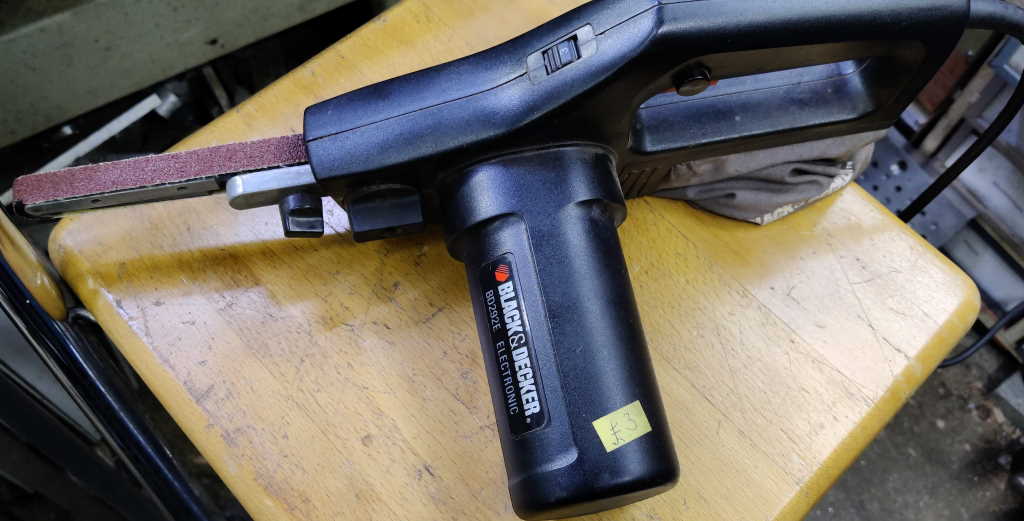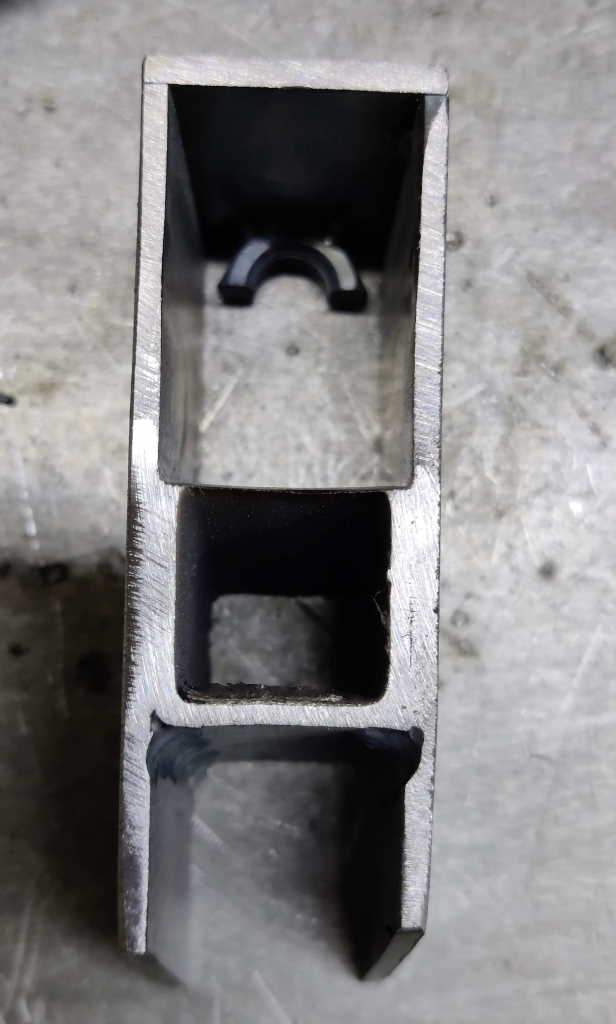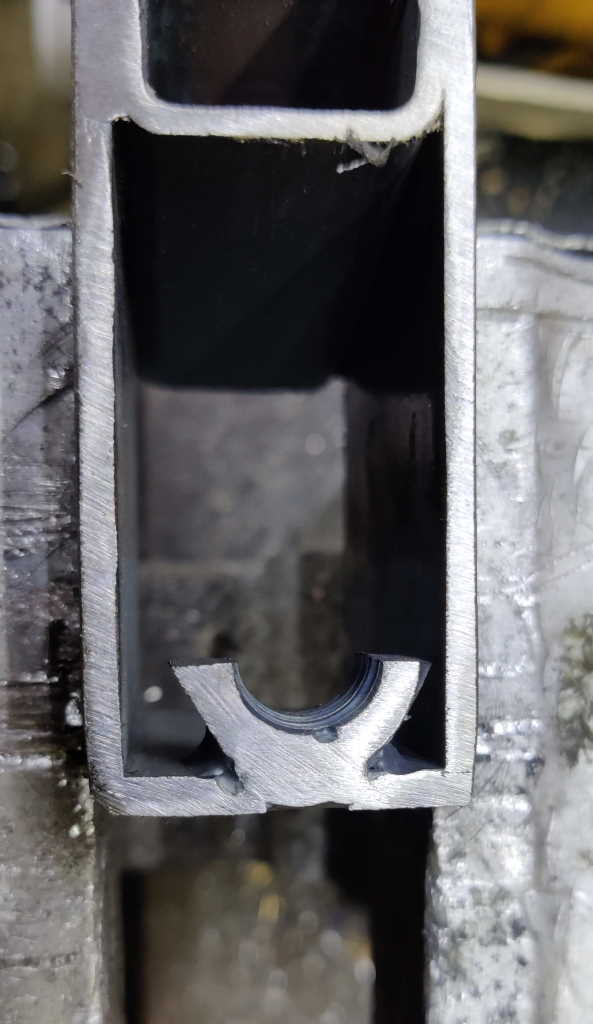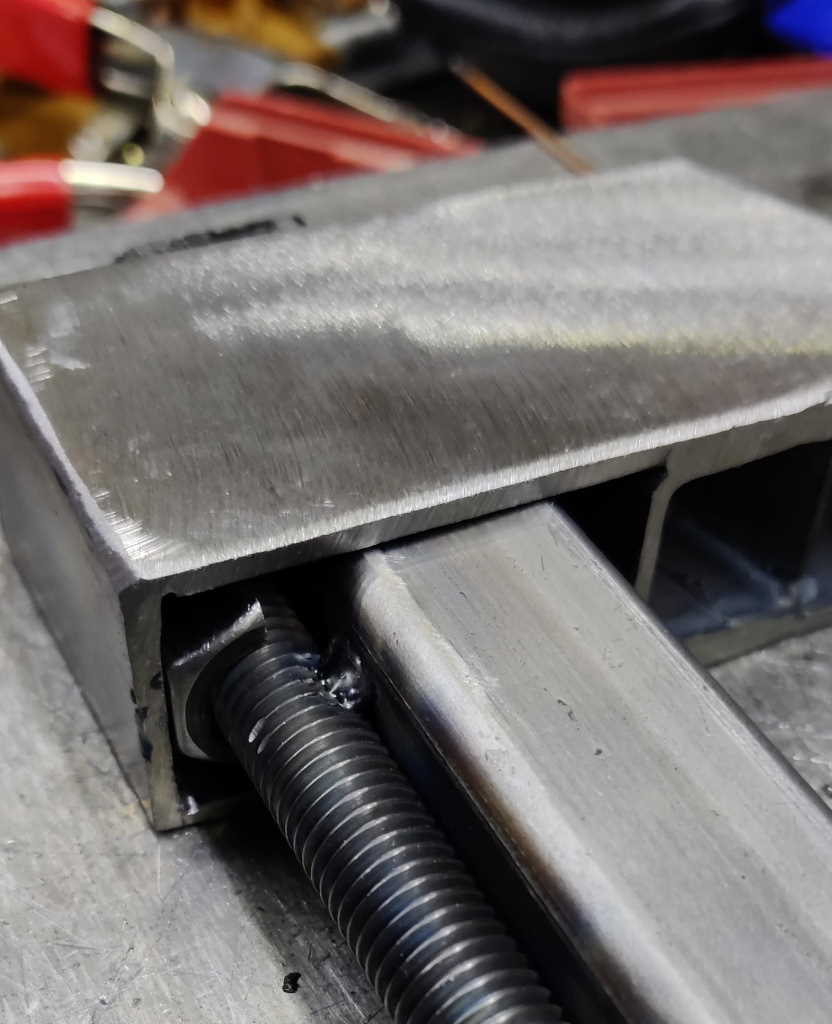Bar Clamps Build Process
12/5/2021
Before carrying on with any welding, I did some testing of the fit of all the jaw frames on the prototype bar (I haven't welded the threaded rod to the final bars yet). The aim of this was to check two things:
- The jaw frames should move freely along the whole length of the bar.
- In the case of the sliding jaw, the jaw should sit parallel with the bar when the half-nut is engaged with the thread. If it sits with the rear edge high, a small amount can be filed off the lowest edge of the short bit of box section welded into the frame to sort this out. If it sits with the rear edge low, the rear face plate for the jaw can be mounted a little lower than the box section to sort it out.
This didn't go well...
None of the screw jaw frames would slide on to the box section (even with a bit of box section that didn't have the threaded rod attached, so it wasn't due to the ledges being too wide). Somehow, the side plates had ended up slightly too close together, not leaving enough clearance for the box section to run smoothly through. I don't really understand why this happened as the "jig" (bit of wood) I used was the same one I used on the prototype and that worked fine. The only vague idea I've had is that the heat of welding the prototype caused the wood to shrink by enough to make a difference. The frame sides looked to be parallel (and needed a fairly even amount taking off the side of the frames), so it's not as if they've bent inwards at one end and closed up because of that. Also weirdly, the sliding jaw frames (which used a jig cut from the same piece of wood - after planing to size) slid on the box section perfectly.
 |
Anyway, at least it was solvable, it just made me very grateful to have this little "power file". I'm not sure what I'd do differently if I made them again; although checking the frames after tack-welding would have given me a chance to fix the problem more easily.
The second check involved checking that the sliding jaws sat parallel with the bar when the half-nut is engaged with the thread. Six of the jaw frames were absolutely spot on. Three of them tilted forward a bit (of which one had another problem) and one tilted back a little. The one that tilted back didn't really need anything doing to it: when the back piece is fitted it can be fitted a little lower than the bottom of the box section and it will support the frame.
 |
For the three that tilted forward a bit, I had to file down the rear corner of the angled box section piece. As the angle of the box section is quite steep, there wasn't much material that had to be removed and I just did this with a hand file.
 |
One of those three had another problem that had to be sorted first. Somehow, its nut had ended up off-centre. I've no idea how that happened. Maybe it was the last one I welded and the double-sided tape I'd used to hold the jig together had started to perish, but I'm really not sure. Bearing in mind that I'm making 10 frames with the aim of getting 8 good ones, I seriously considered just chucking it in the bin and forgetting it, but in the end I got the Dremel out and cut the nut out.
 |
I could then use the prototype bar as an alignment jig and was able to tack the nut in place. I then removed the bar and welded all the way along the front edge and (with the TIG torch plunged deep inside the frame and pretty much out of sight) I also managed to get a couple of tack welds on the back the of the nut.
Page Navigation:
| First (#1) | Previous (#14) | Next (#16) | Last (#32) |
This website is free, but costs me money to run. If you'd like to support this site, please consider making a small donation or sending me a message to let me know what you liked or found useful.